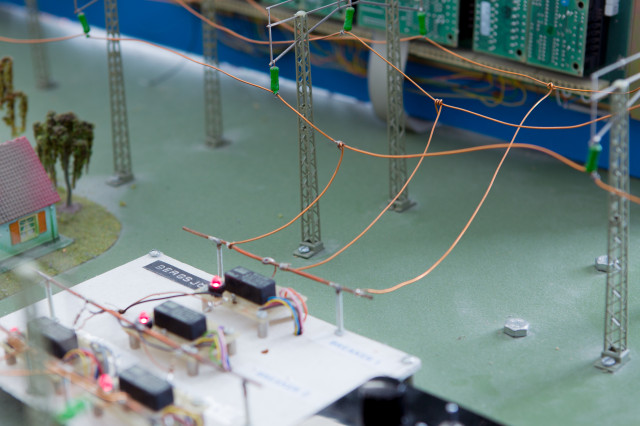Electric power system: from producer to consumer - historical overview and technical progress
The principles behind transfer with high-voltage alternating current (HVAC) or DC-voltage (HVDC)
The architecture of the power system, included components, their fundamental function and design
Laws, regulations and standards that control the power system
Switchgear and substations
Components: breakers, switches, reactors, capacitors, conductors, transmission lines, cables, power electronics, transformers (power and instrument), generators, recitifiers, FACTS, insulators, bushings etc
Insulation and insulators: free air, capsuled with SF6 as insulation medium
Computing models for transient processes, connections and disconnections, lightning and switching overvoltages, fault currents, oscillations and resonances.
System neutral ground
Protective relay
Measuring equipment
Control and supervision
Insulation coordination
Reliability, accessibility and service life characteristics. Aging phenomenon.
Maintenance strategies
Methods for state supervision and diagnostics
After passing the course, the student shall be able to
- give an account of the purpose and fundamental function of different power components and how they are designed
- make computing models for components that can be used for calculation of:
the propagation of transients in the power system,
transient and stationary short-circuit currents and associated induced overvoltages at different short circuit scenarios,
transient overvoltages and currents in different switching situations. The models should be possible to be applied on both linear systems and non-linear, e.g. treatment of ferroresonance,
transient stress distributions in components with geometric extent e.g. windings in transformers
- give an account of different types of system neutral grounding and their advantages and disadvantages
- give an account of different methods for protection against overvoltages
- calculate probabilities that a certain overvoltage gives breakdown of the (insulation co-ordination)
- give an account of which properties that influence the reliability of the power components, accessibility and life
- give an account of the different strains and material properties that influence the design of a power component with respect to thermal, electric and mechanical dimensioning
- give an account of how components are influenced by surrounding environment and how they influence their local environment
- give examples of how laws, regulations and standards influence the design of the power system
- give an account of the most common aging mechanisms and the causes of faults in electric devices and which methods that can be used to clarify if an equipment is aged and therefore run increased risk for faults.
